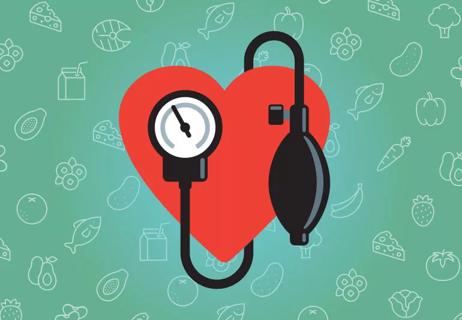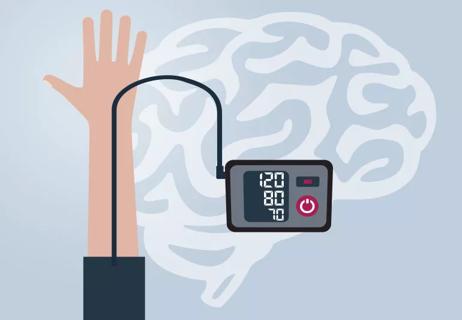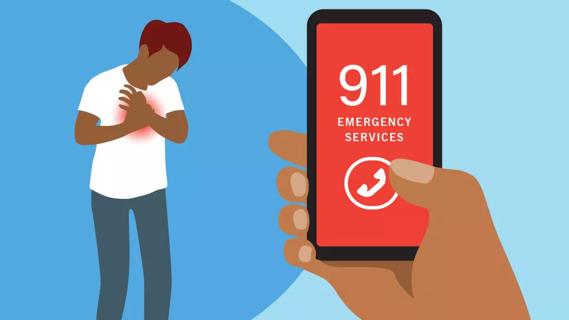An ideal blood pressure is less than 120 mm Hg systolic and less than 80 mm Hg diastolic

Every second that passes by, your heart works hard to keep you alive. By pumping your blood through your circulatory system, each heartbeat ensures that your tissues, organs, systems and cells all get the oxygen and nutrients they need to carry out their daily biological processes.
Advertisement
Cleveland Clinic is a non-profit academic medical center. Advertising on our site helps support our mission. We do not endorse non-Cleveland Clinic products or services. Policy
That’s why when it comes to matters of the heart, we tend to focus on all kinds of measurements. Every new piece of information we gather provides us with important details about how hard our hearts are working for our bodies.
From your resting heart rate to your target heart rate and the difference between heart rate and blood pressure, it seems like there’s a lot of math involved. But the important thing to remember, at least when it comes to understanding your blood pressure numbers, is what part of the equation matters most to your individual health and what new symptoms you’re recognizing in your daily life.
To help make sense of those blood pressure readings, cardiologist Luke Laffin, MD, breaks down what those top and bottom numbers mean on your blood pressure readings and why you should go to the emergency room when certain symptoms arise.
Two numbers make up your blood pressure reading. The top number measures your systolic blood pressure and the bottom number measures your diastolic blood pressure.
Advertisement
Together, these two numbers can tell you how hard your heart is pumping or squeezing blood into your arteries, and how slow or fast your heart is filling back up between beats.
“An ideal blood pressure would be less than 120 millimeters of mercury (mm Hg) for the systolic blood pressure and less than 80 mm Hg for the diastolic blood pressure,” says Dr. Laffin.
If you’re interested in measuring your blood pressure at home, a healthcare provider can point you in the right direction on which blood pressure cuffs to use. You can also search the database created by the American Medical Association that contains a list of validated blood pressure monitoring systems and cuffs you can purchase online.
When taking your blood pressure, it’s important to remember that you should be at rest, seated, with your feet flat on the floor, your back straight and supported, and your arm resting at heart height for three to five minutes before taking your first measurement.
“You want to make sure you haven’t had any coffee, you haven’t smoked recently and that your bladder is empty because these are all things that can raise your blood pressure,” clarifies Dr. Laffin.
When measuring your blood pressure at home, you want to take not one, but two or three measurements separated by 30 to 60 seconds between each measurement.
“It’s common to see a small decrease from the first to the second measurement and then from the second to the third. And the reason we do it like that is because the data we use to set our blood pressure targets or thresholds don’t just check one person’s blood pressure one time or check it when someone just runs in and sits down,” explains Dr. Laffin. “It’s all done in a very standardized way, so we want to approach that standardization any time we’re taking these measurements even when we’re at home.”
Keeping track of these numbers over time can also help your cardiologist and other healthcare providers determine any potential diagnoses should any symptoms or concerns arise.
“Anyone who has a personal history of hypertension (high blood pressure) should be checking their blood pressure at least once every two to four weeks at home,” states Dr. Laffin. “But if you’ve made medication changes, other lifestyle changes or have a personal history of heart disease or stroke, checking your blood pressure more often may also be advisable.”
Based on where you live in the world, there may be different blood pressure thresholds and guidelines for you to follow. In the United States, blood pressure thresholds are determined by a multi-society group, including the American Heart Association. These guidelines were updated in 2017 to create lower thresholds across five categories in an effort to reduce the risk of heart disease and stroke. By targeting and maintaining lower blood pressure levels, the hope is to reduce the damage that’s caused to blood vessels when blood pressure is elevated over time.
Advertisement
“Most people don’t feel any different even when their blood pressure is elevated, and that’s why they call it the ‘silent killer,’” explains Dr. Laffin.
“For most people, our body is able to adapt to high blood pressures for short-to-medium periods of time. But the problem is the long-term elevations in blood pressure and the impact it has over the long term — left ventricular hypertrophy (the thickening of the heart muscle), kidney disease, heart failure — these all manifest over years to decades as you continue to have untreated high blood pressure.”
Blood pressure numbers less than 120/80 mm Hg are considered within the ideal range. If your measurements fall within this range, you can maintain these numbers by focusing on:
The second category is considered elevated blood pressure, when your readings are consistently between 120 and 29 mm Hg systolic and less than 80 mm Hg diastolic. People who have elevated blood pressure have an increased risk of developing high blood pressure unless lifestyle changes are made to help manage their condition.
You can also experience blood pressure on the lower end, too. If you’re getting systolic readings of less than 90 mm Hg, it’s considered hypotension (low blood pressure). This can have a variety of causes and can lead to dizziness, fainting, fatigue and other symptoms.
Advertisement
“Sometimes, if we have infections or we’re dehydrated, our blood pressure can be low,” explains Dr. Laffin. “If we have significant bleeding, our blood pressure can be low and that can be dangerous, particularly more acutely.”
Without lifestyle changes and proper treatment, low blood pressure can also result in acute kidney injury or stroke.
Stage 1 hypertension (high blood pressure) occurs when your blood pressure readings consistently fall within the range of 130 to 139 mm Hg systolic and/or 80 to 89 mm Hg diastolic. If you fall within these ranges and have a personal history of cardiovascular disease, heart attack or stroke, a healthcare provider may recommend or prescribe certain lifestyle changes or blood pressure medications to help lower your blood pressure to a normal range.
Stage 2 hypertension (high blood pressure) occurs when your blood pressure readings are consistently 140 mm Hg or higher for systolic and 90 mm Hg or higher for diastolic.
“Your heart has to pump against this pressure, and this pressure is then transmitted to all your organs like your brain and your kidneys,” explains Dr. Laffin. “The heart has to squeeze against that pressure to actually eject the blood. It’s a muscle. So, if you have to squeeze against all that pressure, your heart is going to thicken and it’s going to damage itself.”
Advertisement
This final category is severely elevated blood pressure. Anything over 180 mm Hg for systolic and/or 120 mm Hg diastolic should be addressed urgently. If you get one of these readings, you feel relatively OK and you’re not experiencing any new symptoms, wait a couple of minutes and retake your measurements again. If you get the same results, contact a healthcare provider for evaluation.
But if you’re experiencing any new symptoms you haven’t felt before or something doesn’t feel right to you, going to the emergency room is more important than stopping to measure your blood pressure.
Dr. Laffin advises getting a medical evaluation and going to the emergency room if you experience any of these symptoms and have a history of heart disease and/or have high blood pressure:
“There’s no specific blood pressure threshold over which someone needs to go to the emergency department, but if you’re having new concerning symptoms you haven’t experienced before, these are issues where you definitely need to be seen in the emergency department right away even if you have normal blood pressure and especially if you have high blood pressure,” stresses Dr. Laffin.
Every second counts when trying to prevent a heart attack — and every ounce of prevention you take to make sure your blood pressure falls within ideal ranges can go a long way in the long-run.
Learn more about our editorial process.
Advertisement

Aerobic exercise, a low-sodium diet and reduced alcohol consumption can all help

Foods high in vitamins C and E can help lower your blood pressure

Cardio and strength training can strengthen your heart

Understanding the connection between potassium and heart health

Study underscores importance of managing BP

Lorem ipsum dolor sit amet. Et odio Quis vel ipsam omnis eum alias deleniti et placeat impedit non voluptas galisum hic autem enim et cupiditate aliquid. Est beatae quidem non facilis autem ut commodi nisi aut tempore rerum et dolores voluptatem cum enim optio id sapiente quasi. Ad laboriosam officiis 33 cupiditate sequi ea voluptatum consectetur qui necessitatibus voluptate et quasi doloremque et facere explicabo quo explicabo officia

Absolutely! In fact, in many ways, exercise is key to recovery

There’s no way to stop it once a heart attack is happening, but the most important thing you can do is to call for help

Type 2 diabetes isn’t inevitable with these dietary changes

Applying a hot or cold compress can help with pain